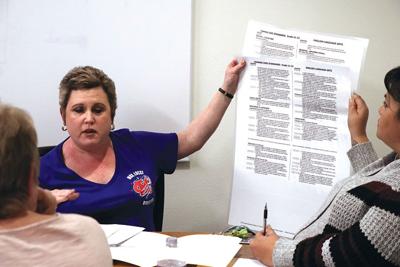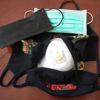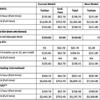Only one of the eight school districts and charter school systems operating within in Rio Arriba County’s borders received a favorable grade on the annual report card, recently compiled by state regulators.
Mesa Vista School District staff and students earned a C for their 2016-17 School Year grade, according to the report cards New Mexico Public Education Department officials released Nov. 9. The grades are based on an A to F scale.
The C outshined the individual Ds earned by Chama Valley Independent Schools, Jemez Mountains Public Schools, Española School District, McCurdy Charter School and La Tierra Montessori School and the Fs the students and staff at Dulce Independent Schools and Cariños Charter School earned.
The C Mesa Vista earned is a letter grade improvement from the D earned on the 2015-16 report card. The grade was sparked by improved test scores in nearly all grades, except for seventh- and eighth-grade reading and math.
Mesa Vista School Board President Marvyn Jaramillo attributes the District’s improvement to a combination of family involvement and hard work on behalf of the teachers and students.
“We owe it to the parents for motivating their children, the students for pushing themselves and the teachers for their hard work,” he said. “They are the backbone of the District.”
Chama School District staff and students earned a D, which is a full letter grade drop from the three consecutive Cs, the district received prior to the issuance of this year’s report card. The overall grade was partly based on student proficiency declines in math and reading across nearly all grade levels.
For example, 47 percent of Chama 11th-graders were proficient in reading, compared to 60 percent a year earlier. The single-largest decrease was the 45-point drop in proficiency scores for the fourth-grade science class. Only 27 percent of those students were at grade level, compared to 72 percent a year ago.
Chama Superintendent Anthony Casados said, shortly after the individual school grades were released, that the proficiency percentages can be greatly influenced by school population. He also attributed disorganization to the District’s overall grade.
“At the Escalante unit, there was a drop in School Improvement based on the decline of the higher performing student scores,” he wrote in an email. “The high school principal failed to administer the Opportunity to Learn Survey, which negatively affected the overall final grade. We need to take into consideration the number of students enrolled. One student’s test results in a small school district such as ours will significantly impact all test scores across the board.”
Jemez School District also received a failing grade after two consecutive years of earning a C on the annual evaluation. Like the other school districts, Jemez’s grade decline coincided with an almost systemwide drop in test scores.
Norma Cavasos, Jemez School superintendent, said she hopes to facilitate improvements at individual school sites and districtwide, by using the information compiled in the individual school and district grades to steer professional development and student instruction.
“There is not one specific reason for the decline across-the-board,” she said. “We have to regroup, study the student and teacher data and use this data to guide us.”
Dulce Independent School students and staff earned an F for the second consecutive year.
Dulce’s overall grade was based on the dismal test score data that shows 6 percent of the third- through 11th-graders were at grade level in reading and 6 percent of the same students were proficient in math.
The Dulce fourth-, ninth- and 11th-graders who participated in the standardized science testing didn’t perform much better. Approximately 9 percent of those students were at grade level in science.
Charter schools fall short
McCurdy Charter School earned a D, on this year’s report card, which is a letter grade drop from last year’s C.
The grade was based on an overall decline in reading proficiency from 21 percent, to 18 percent, for the school’s third- through 11th-grade students.
The same students saw their overall math proficiency rating drop from 10 percent in 2015-16, to 8 percent for this year.
McCurdy Charter School Director Michele Lucci said she and her staff plan to turn the grade around by using data to target student learning and technology, to take the monotony out of learning.
La Tierra Montessori School experienced the largest grade difference of all school systems, between the 2015-16 and 2016-17 school years.
The school’s staff and students saw their grade drop two letter grades, from 2015-16’s B, to this year’s D.
Christie Berg, La Tierra’s head learner, said in addition to establishing peer learning communities to help strengthen the school’s ability to deliver instruction, the school has also implemented several measures to spur student growth.
For example, Berg said the entire student body is given, depending on the day, math or reading language homework to help prepare them for the battery of standardized tests they will take throughout the school year.
The students also receive in-class tutoring that gives them an extra 15 minutes of daily math and reading instruction.
Berg said while she understands how regulators arrived at the letter grade, she questions the overall system.
Student test scores are currently compared to their peers across the state, which increases the sample size and diminishes the gains La Tierra students realized.
She said if La Tierra students weren’t grouped with their grade-level peers throughout the state, the small gains the students realized would have made a difference on the overall report card.
“I don’t like it,” she said. “I understand it and I had it explained to me many times, but I would prefer our students get compared to themselves,” she said.
Rounding out the district report cards grades was the F Cariños Charter School earned.
This is the first year the school received a districtwide report card because since its inception, it was part of the Española School District.
The last grade Cariños received while under the Española charter was also an F.
The individual report cards also list the graduation data for the six school systems that accommodate 12th-graders.
McCurdy and Mesa Vista had a 74-percent graduation rate, which is three-percentage points above the state’s 71-percent average.
Dulce graduated 77 percent of its seniors, Jemez Mountains graduated 80 percent and Chama rounded out the graduation rates with the highest rate, at 81 percent.




(0) comments
Welcome to the discussion.
Log In